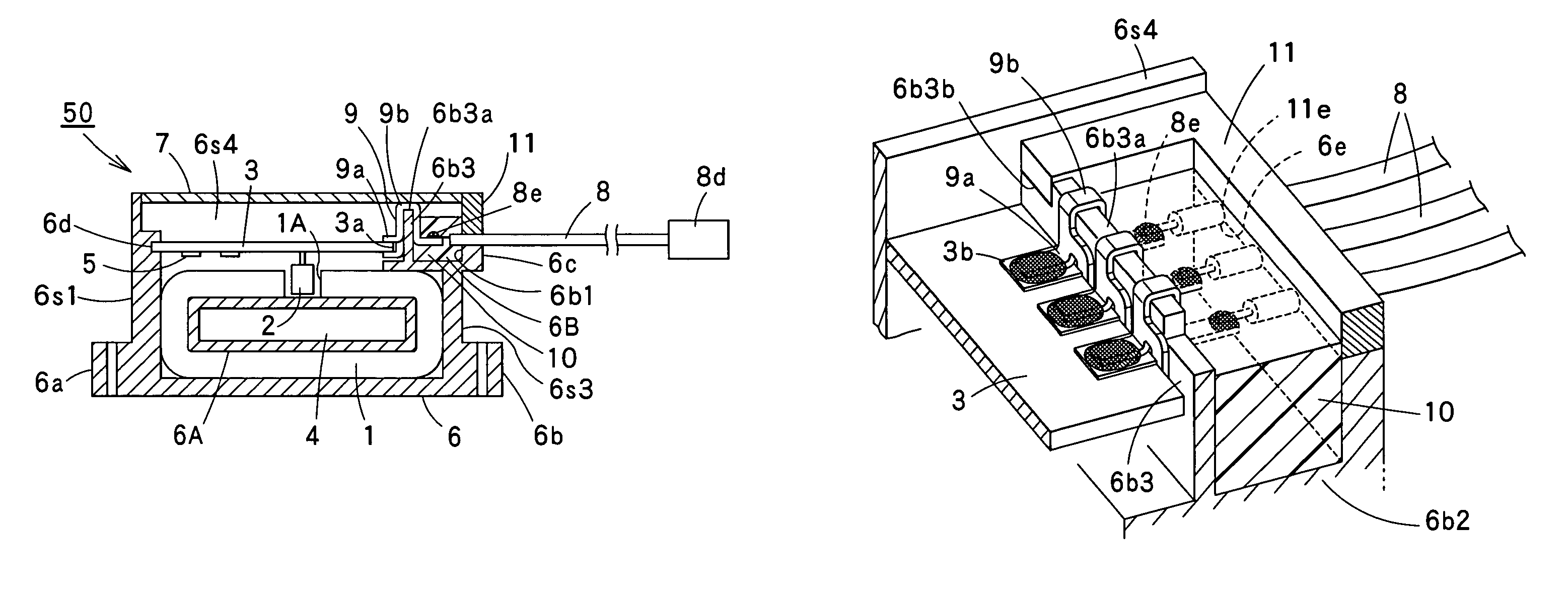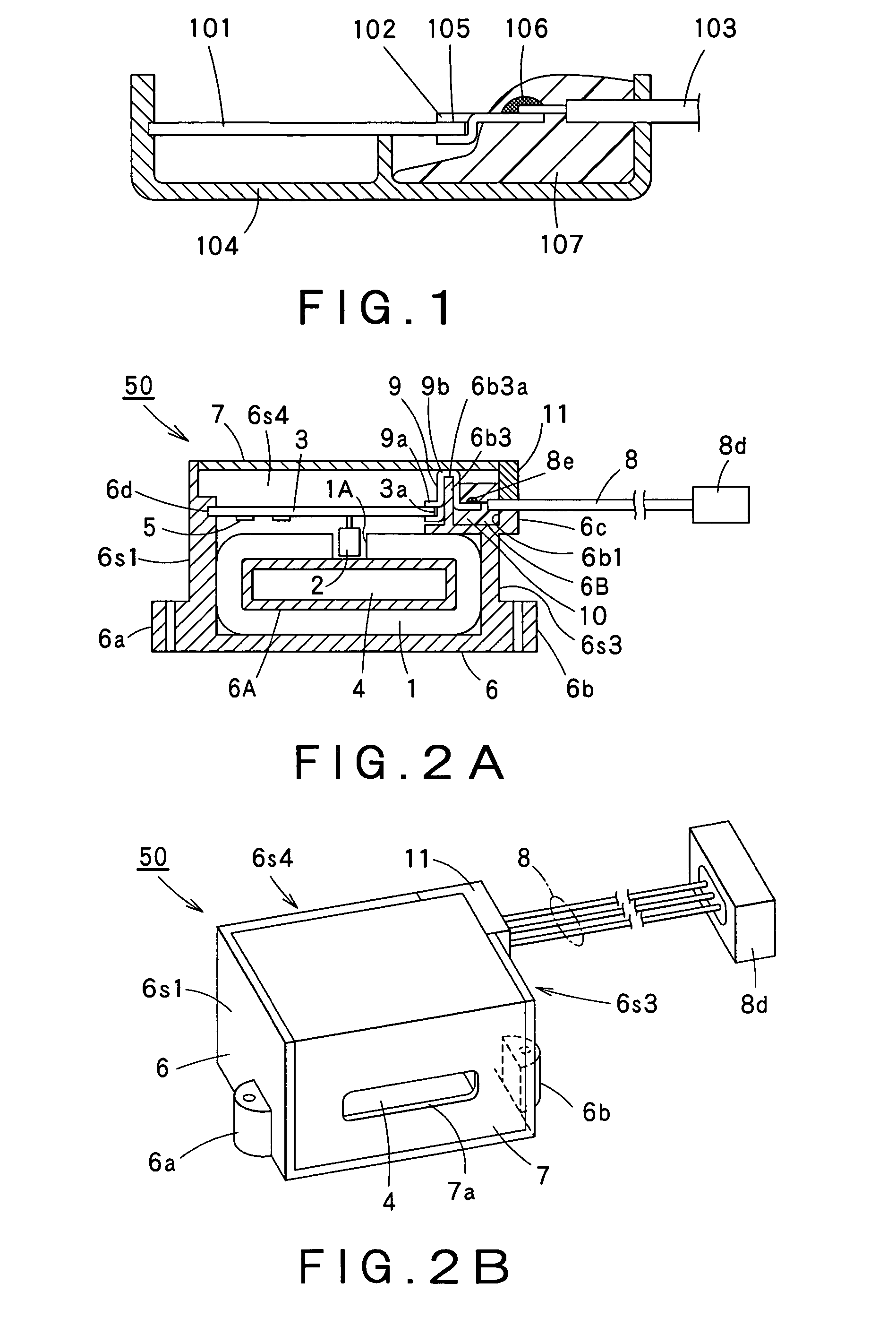Electronic component
a technology of electronic components and lead wires, applied in the direction of electrical apparatus casings/cabinets/drawers, coupling device connections, semiconductor/solid-state device details, etc., can solve the problems of low workability of lead wires connecting to the circuit board, bad electrical contact, low contact strength of wires, etc., and achieve high reliability
- Summary
- Abstract
- Description
- Claims
- Application Information
AI Technical Summary
Benefits of technology
Problems solved by technology
Method used
Image
Examples
first embodiment
[0028]FIGS. 2A, 2B, 3 and 4 show a current sensor 50, an electronic component according to the present invention. FIG. 2A show a cross section of the first embodiment. FIG. 2B is a perspective view of the first embodiment. FIG. 3 is an assembly view illustrating how to assemble the first embodiment. FIG. 4 is a partially enlarged view of the first embodiment. FIG. 2A is a view taken on line A—A of FIG. 3. Epoxy resin 10 is indicated with dots for its cross section only in FIG. 2A so that elements covered with resin 10 can been seen.
[0029]The current sensor 50 (the first embodiment) accurately detects a large current flowing through a current path with no loads applied thereto.
[0030]As shown in FIG. 2A, a hall element 2 mounted on a circuit board 3 is situated in a magnetic gap 1A of a loop-like magnetic core 1. A conducting wire (not shown) is inserted into the magnetic core 1. A current flowing through the conducting wire is detected by the hall element 2.
[0031]The magnetic core 1 ...
PUM
 Login to View More
Login to View More Abstract
Description
Claims
Application Information
 Login to View More
Login to View More - R&D
- Intellectual Property
- Life Sciences
- Materials
- Tech Scout
- Unparalleled Data Quality
- Higher Quality Content
- 60% Fewer Hallucinations
Browse by: Latest US Patents, China's latest patents, Technical Efficacy Thesaurus, Application Domain, Technology Topic, Popular Technical Reports.
© 2025 PatSnap. All rights reserved.Legal|Privacy policy|Modern Slavery Act Transparency Statement|Sitemap|About US| Contact US: help@patsnap.com



